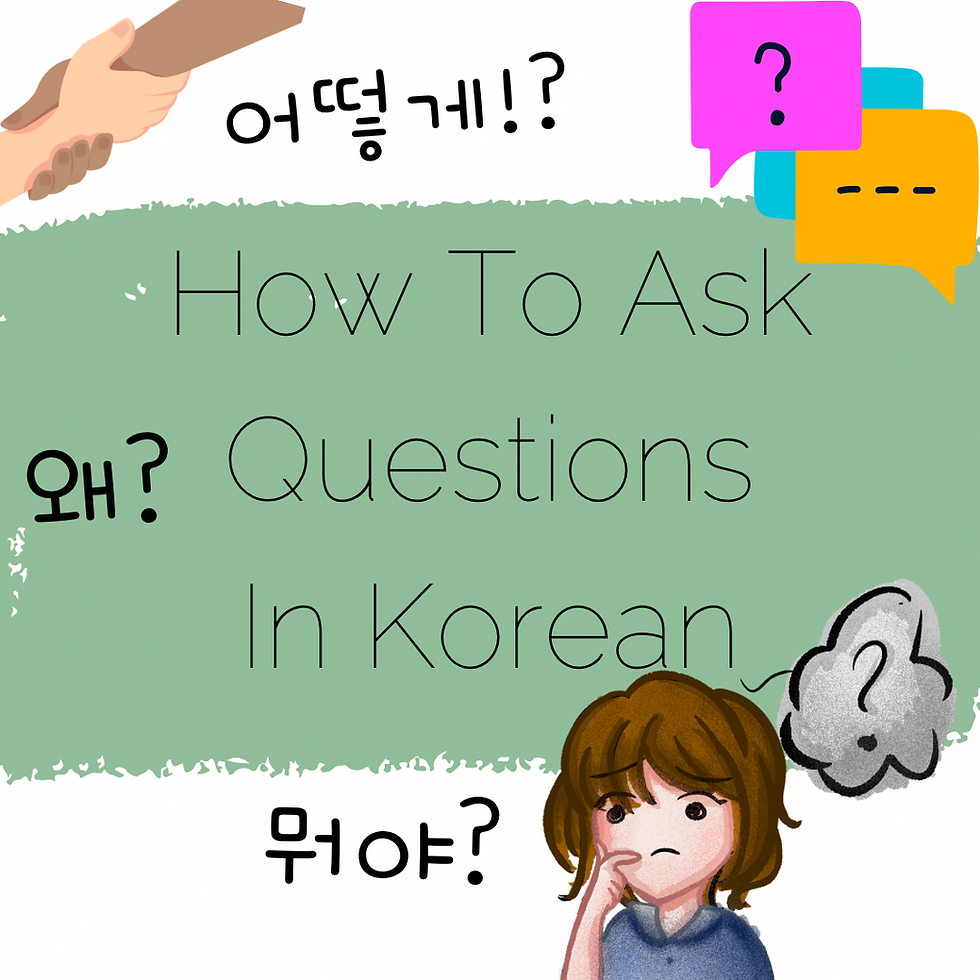Conjugating Past and Present Tense In Korean
- Moments_Captured
- Jul 25, 2022
- 3 min read
Hey Everyone! Here's another post from me, Zoey!
The Korean language has so many forms of conjugation. A verb from its basic form or infinitive form (Which has 다 in it) can be conjugated in many ways to create different meanings and endings. Today we will learn how to conjugate verbs into the present and past tense forms.
Let's start off with the present tense form. The present tense in Korean has the following endings:
-아요, -어요, -여요.
In order to turn a verb into the present tense, we'd take the basic form, for example, 가다 (to go), and drop the 다 ending, making it 가. This is then called a verb stem. Then there are a few rules to follow to decide which ending suits the verb.
If the last vowel of the verb stem ends with ㅏ or ㅗ then the ending would be -아요
If the vowel ends with anything other thanㅏor ㅗ (ㅓㅣㅡㅐㅔetc) then the ending would be -어요
If the verb stem has an ending of 하 as in 하다 then it would end with -여요.
Examples:
가다(Drop the 다) - 가(has an ㅏ ending) - 가요 (he goes, she goes, I go)
보다 - 보+ 아요 - 봐요 (I see, He sees, she sees)The vowels would merge into a syllable in this instance.
먹다 - 먹 + 어요 - 먹어요 ( He eats, she easts, I eat)
보이다 - 보이 + 어요 - 보이어요 ----> 보여요 (It's visible, he sees it) Changed for ease of speech and writing by Koreans
수영하다 - 수영하 + 어요 - 수영하어요-----> 수영해요(she swims, he swims) Koreans eventually ended up pronouncing it this way to make it easier so this is how it would be written as well.
공부하다 - 공부하 + 여요 - 공부해요 (He studies, I study, We study)
Now moving on to Past tense form. It's actually pretty easy and very similar to how present tense works. The past tense form in Korean has the following endings, -았어요, -었어, -였어요. The following are the rules you need to keep in mind while conjugating verbs to the Past tense form. They are very similar to the previous form we learned.
If the last vowel of the verb stem ends with ㅏ or ㅗ then the ending would be -았어요
If the vowel ends with anything other thanㅏor ㅗ (ㅓㅣㅡㅐㅔetc) then the ending would be -었어요
If the verb stem has an ending of 하 as in 하다 then it would end with -였어요.
I will use the same examples as before to help understand this easier and so that you can see the difference with ease.
가다(Drop the 다) - 가(has an ㅏ ending) - 갔어요 (he went, she went, I went)
보다 - 보+ 았어요 - 봐았어요 (I saw, He saw, she saw)The vowels would merge into a syllable in this instance.
먹다 - 먹 + 었어요 - 먹었어요 ( He ate, she ate, I ate)
보이다 - 보이 + 었어요 - 보이었어요 ----> 보였어요 (It was visible, he saw it) Changed for ease of speech and writing by Koreans
수영하다 - 수영하 + 였어요 - 수영하였어요-----> 수영했어요(she swam, he swam) Koreans eventually ended up pronouncing it this way to make it easier so this is how it would be written as well.
공부하다 - 공부하 + 였어요 - 공부했어요 (He studied, I studied, We studied)
There are exceptions to these rules and certain verbs are known as irregular verbs in which case we can't apply these rules, but such cases are less popular and you would eventually get the hang of them as well once you practice these verbs.
Woooooo! That wasn't so hard right? Now you know how to change verbs into present and past tense! Let's start working on those sentences ><
Thank you for reading and hopefully, it was a useful read. As always like comment and share if you want to see more of such blog posts and to make our writers feel loved for all their hard work!







Comments